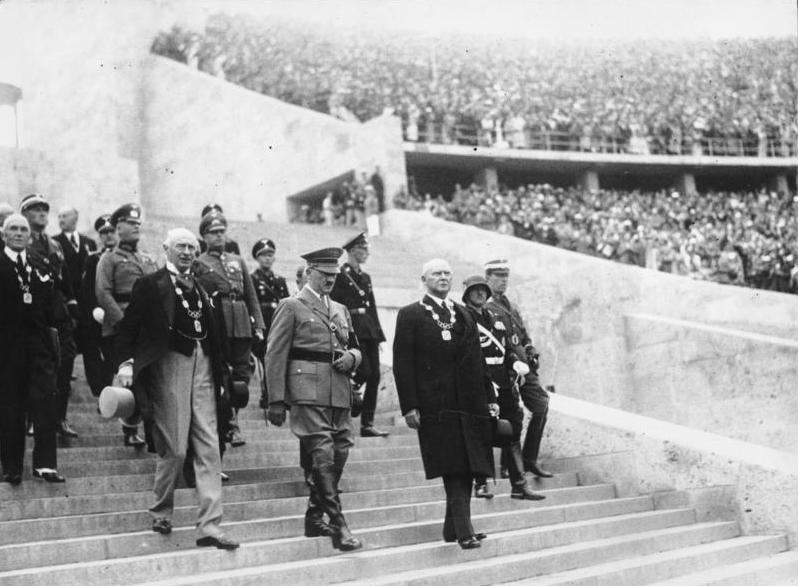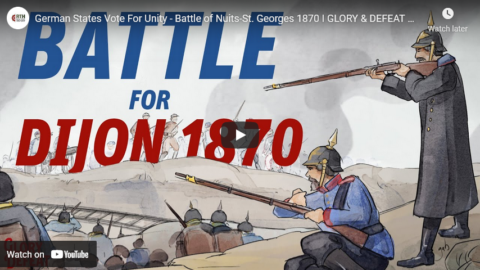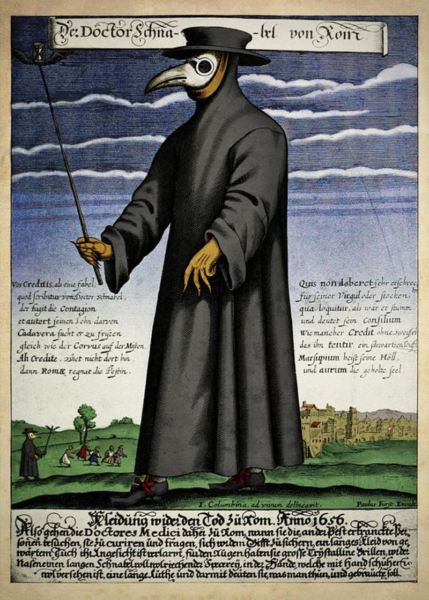Historia Civilis
Published 17 Dec 2016Io, Saturnalia!
Patreon | http://historiacivilis.com/patreon
Donate | http://historiacivilis.com/donate
Merch | http://historiacivilis.com/merch
Mailing List | http://historiacivilis.com/mailinglist
Twitter | http://historiacivilis.com/twitter
Website | http://historiacivilis.comMusic is:
“I //\\ I,” by Discount Fireworks
December 18, 2021
Saturnalia
QotD: The Game of Life
Life, as it is often called, was conceived as a modern take on a board game designed in 1860 … called the Checkered Game of Life …
By 1960, the Checkered Game of Life had disappeared from most American game tables. It had been replaced by such as entrants as Monopoly, which rewarded winners with riches, punished losers with penury and became one of the top-selling board games in the United States during the Depression. Mr. Klamer’s task, as assigned by the Milton Bradley Co., was to create a game to mark the company’s 100th anniversary … With the assistance of colleagues … Mr. Klamer updated [the Checkered Game of Life] for the aspirations of contemporary players. For instance, players of the new version would choose between a “business” route, which afforded an immediate salary, and “college”, which promised a larger but delayed one … To board game enthusiasts, the Game of Life was a beauty: a marvel of topography with raised roads that players traversed in their station-wagon game pieces. According to the volume Timeless Toys: Classic Toys and the Playmakers Who Created Them, by Tim Walsh, Life was “the first three-dimensional game board using plastic.” … Destinations in the 1960 version included “Millionaire Acres” — or the “Poor Farm”.
From “Reuben Klamer, toy inventor who created the Game of Life, dies at 99” (WaPo).
I played that game when it was new in the 1960s, and I guess those 3-dimensional aspects and the built-in spinner were pretty exciting. But what a drag it made life seem! You’re a peg in a car and you gather family members to fill the hole in the car and keep driving till you get to the end. At least the end wasn’t called Death.
And it seems that this is where we Baby Boomers learned we’d better go to college. The game had determined the income difference. But you didn’t even have any fun in college or learn anything deep. You just upped your earning potential, and the point of life/Life was to make the most money. What an awful game!
Ann Althouse, “Life as it is often called, was conceived as a modern take on a board game designed in 1860 … called the Checkered Game of Life“, Althouse, 2021-09-17.
December 17, 2021
German States Vote For Unity – Battle of Nuits-St. Georges 1870 I GLORY & DEFEAT Week 23
Real Time History
Published 16 Dec 2021Sign up for Curiosity Stream and get Nebula bundled in and SAVE 26%: https://curiositystream.com/realtimeh…
While the German delegations arrive in Versailles to set in motion the unification of the German states into a German Reich, the people in nearby Paris are starving and their army is still fighting in the countryside.
» THANK YOU TO OUR CO-PRODUCERS
John Ozment, James Darcangelo, Jacob Carter Landt, Thomas Brendan, Kurt Gillies, Scott Deederly, John Belland, Adam Smith, Taylor Allen, Rustem Sharipov, Christoph Wolf, Simen Røste, Marcus Bondura, Ramon Rijkhoek, Theodore Patrick Shannon, Philip Schoffman, Avi Woolf,» OUR PODCAST
https://realtimehistory.net/podcast – interviews with historians and background info for the show.» LITERATURE
Arand, Tobias: 1870/71. Der Deutsch-Französische Krieg erzählt in Einzelschicksalen. Hamburg 2018Gouttman, Alain: La grande défaite. 1870-1871. Paris 2015
» SOURCES
Hérisson, Maurice d’: Journal d’un officier d’ordonnance. Paris 1885Kriegsgeschichtliche Abteilung des Großen Generalstabs (Hrsg.): Der deutsch-französische Krieg 1870-71. 2.2. Berlin 1880
Kürschner, Joseph (Hrsg.): Der große Krieg 1870-71 in Zeitberichten. Leipzig o.J. (1895)
Meisner, Heinrich Otto (Hrsg.): Kaiser Friedrich III. Das Kriegstagebuch von 1870/71. Berlin, Leipzig 1926
Pietsch, Ludwig: Von Berlin nach Paris. Kriegsbilder 1870-71. Berlin 1871
Schikorsky, Isa (Hrsg.): “Wenn doch dies Elend ein Ende hätte”. Ein Briefwechsel aus dem Deutsch-Französischen Krieg 1870/71. Köln, Weimar, Wien 1999
» OUR STORE
Website: https://realtimehistory.net»CREDITS
Presented by: Jesse Alexander
Written by: Cathérine Pfauth, Prof. Dr. Tobias Arand, Jesse Alexander
Director: Toni Steller & Florian Wittig
Director of Photography: Toni Steller
Sound: Above Zero
Editing: Toni Steller
Motion Design: Philipp Appelt
Mixing, Mastering & Sound Design: http://above-zero.com
Maps: Battlefield Design
Research by: Cathérine Pfauth, Prof. Dr. Tobias Arand
Fact checking: Cathérine Pfauth, Prof. Dr. Tobias ArandChannel Design: Battlefield Design
Contains licensed material by getty images
All rights reserved – Real Time History GmbH 2021
Those Olympic rings are more than just tarnished
In First Things, George Weigel notes the, ah, Olympian disdain for mere morality and human decency is far from a new thing as the IOC prepares for the Beijing games in 2022:

Google translation of the original German caption: “Before the ceremonial opening of the XI Olympic Games. Together with the members of the International and National Olympic Committee, the Führer and Reich Chancellor enters the stadium through the marathon gate. On the left of Adolf Hitler [Henry] Graf Baillet-Latour, on the right His Excellency [Theodor] Lewald.”
German Federal Archives (Accession number Bild 183-G00372) via Wikimedia Commons.
In July 2016, as we were sitting on the fantail of the Swiss sidewheeler Rhone while she chugged across Lake Geneva, my host pointed out the city of Lausanne, where a massive, glass-bedecked curvilinear building was shimmering in the summer sun. “Isn’t that the headquarters of the International Olympic Committee?” I asked. When my friend replied in the affirmative, I said, “I thought I smelled it.”
That rank odor — the stench of greed overpowering the solidarity the Olympics claim to represent — has intensified recently.
Even the casual student of modern Olympic history knows about the August 1936 Berlin Games, at which America’s Jesse Owens, a black man, took four gold medals and trashed Hitler’s Aryan supremacy myth. Fewer may be aware that, in February that year, the Olympic Winter Games were held in the Bavarian town of Garmisch-Partenkirchen. How, we ask today, could two Olympics be held in the Third Reich? How could people not know?
There was some controversy about holding the summer and winter Olympics under Nazi auspices. But in 1936, the German situation was not as comprehensively ghastly as it would become in later years. Yes, the Dachau concentration camp for political prisoners had opened in March 1933, and the Nuremberg Laws banning Jews from German citizenship and prohibiting marriage between Jews and “Aryans” had been enacted in 1935. The horrors of the Kristallnacht pogrom in November 1938 were two years in the future, however, and the satanic Wannsee Conference to plan the “Final Solution” to the “Jewish Question” would come six years later. Clear-minded people ought to have discerned some of the implications of the Nuremberg Laws. But the industrialized mass slaughter of millions, simply because they were children of Abraham, was beyond the imagination of virtually everyone.
So Hitler and his thugs temporarily behaved themselves (sort of) in the run-up to the Garmisch-Partenkirchen and Berlin Olympics. And the International Olympic Committee could salve whatever conscience it had in those days and proceed with the games.
The IOC has no excuses today, two months before the XXIV Olympic Winter Games open in Beijing. Because today, everyone knows.
Death Squads Arrive in North Africa – WAH 048 – December 1942, Pt. 1
World War Two
Published 16 Dec 2021Despite Allied occupation, the situation of the Jews in North Africa hardly improves, in newly German-occupied Tunisia it deteriorates. Meanwhile, the world learns more of the details of the Holocaust — they cannot believe their ears.
(more…)
Scott Alexander on the risk of ancient plagues returning
The other day, Scott Alexander responded to a hair-on-fire New York Magazine piece of hysteria-mongering about climate change warming up arctic zones that may still harbour ancient plagues that can return:
I’m a little nervous talking about this, because I am not a microbiologist. But I haven’t seen the proper experts address this properly, so I’ll try, and if I’m wrong you guys can shout me down.
(Also, the real microbiologists are apparently “self-injecting [3.5 million year old bacteria] just out of curiosity” and we should probably stay away from them for now)
I think we probably don’t have to worry very much about ancient diseases from millions of years ago.
Animal diseases can’t trivially become contagious among humans. Sometimes an animal disease jumps from beast to man, like COVID or HIV, but these are rare and epochal events. Usually they happen when the disease is very common in some population of animals that lives very close to humans for a long time. It’s not “one guy digs up a reindeer and then boom”.
If a plague is so ancient that it’s from before humans evolved, it’s probably not that dangerous. In theory, it could be dangerous for whatever animal it originally evolved for — a rabbit plague infecting rabbits, or an elephant plague infecting elephants. And then maybe after many rabbits are infected, some human might eat an infected rabbit and get unlucky, and the plague might mutate to affect humans. But I don’t think this is any more likely than any of the zillion plagues that already infect rabbits jumping to humans, and nobody is worrying about those.
The story about anthrax is a distraction. The fact that someone got anthrax from a corpse frozen in permafrost is irrelevant; there is anthrax now, and you could get it from a perfectly fresh corpse or living animal if you wanted. It’s adapted to animals and it can’t spread from person to person. Just because you got an irrelevant-to-humans modern animal disease when you dug up a modern animal, doesn’t mean you’re going to get a dangerous-to-humans disease from an ancient animals.
But I’m more concerned about recent human plagues coming back.
Not bubonic plague; that one is another distraction. The reason we don’t get more Black Deaths isn’t because yersinia pestis died off or mellowed out. It’s because we have good sanitation and pest control.
But the 1918 Spanish flu has, as far as I know, legitimately died out. Lots of people like saying that in a sense it’s still with us. This NEJM paper (with a celebrity author!) points out that it’s the ancestor of all existing flu strains. But most of these flu strains are less infectious than it was. This didn’t make sense to me the first, second, or third time I asked about it: why would a flu evolve into an inferior flu? Sure, it might evolve into a less deadly flu because it’s perfectly happy being more infectious but less deadly. But I think the Spanish flu was also especially infectious; so why would it evolve away from that?
SA80 History: L22A2 and Experimental L85 Carbines
Forgotten Weapons
Published 24 May 2017Armament Research Services (ARES) is a specialist technical intelligence consultancy, offering expertise and analysis to a range of government and non-government entities in the arms and munitions field. For detailed photos of the guns in this video, don’t miss the ARES companion blog post:
http://armamentresearch.com/british-e…
One of the original design intentions of the SA80 project was to replace the infantry rifle and the submachine gun with a single weapon that could fulfill both roles — hence the choice of a bullpup configuration. This would, theoretically, allow rifle ballistics and also SMG handling and maneuverability. As with most bullpup projects, however, this plan did not last. It quickly became clear that a shortened version of the L85 rifle could be made, which would be more suitable for troops who would previously have been issued submachine guns — notably aircraft and armored vehicle crews.
Today we take a look at a couple of early prototypes of these carbines which did not go into production. We also examine an L22A2 carbine, which did become standard issue in 2003 for some units. This carbine includes all of the H&K A2 pattern upgrades, and was given the A2 designation despite there never being an adopted L22A1.
http://www.patreon.com/ForgottenWeapons
Cool Forgotten Weapons merch! http://shop.bbtv.com/collections/forg…
If you enjoy Forgotten Weapons, check out its sister channel, InRangeTV! http://www.youtube.com/InRangeTVShow
QotD: The Kafkatrap that is known as “white feminism”
There is a logical fallacy called the Kafka Trap. It describes the condition of always being wrong. If you are accused of something, and you deny it, that denial is taken as an admission of guilt; only a guilty party would go out of their way to deny an allegation of wrongdoing. Alternatively, if you say nothing in the face of the allegation, that’s also an admission of guilt: your silence means you have accepted the allegation.
Many describe Franz Kafka’s disenchanted fables as tragic. And this is certainly true. But they are also farcical. To watch someone being relentlessly wrong can be grimly enjoyable — as long as you’re not the person in question.
The term white feminism, as it is commonly used today, is a classic example of the Kafka Trap. If you show too much interest in the lives of people of colour, you risk being accused of white saviourism — which is another way of saying you have a suspiciously condescending attitude to people of colour. But if you don’t show enough interest, you are insufficiently intersectional. You only care about the white, middle-class cisgendered women in your social circle.
White feminism is a classic example of the Kafka Trap because whatever you do is either too much or not enough. You are never right.
Tomiwa Owolade, “The problem with white saviours”, UnHerd.com, 2021-09-12.
December 16, 2021
The Charter of Rights and Freedoms versus Quebec’s Bill 21 (Loi sur la laïcité de l’État)
Andrew Potter characterizes our next big constitutional bun-fight as an exploded time-bomb in the Canadian Charter of Rights and Freedoms:
In 1982, Prime Minister Pierre Trudeau and the provincial premiers inserted a time bomb into the Canadian constitution. It finally went off last week, when an elementary school teacher in West Quebec was removed from the classroom for wearing a hijab, in violation of Bill 21, the province’s secularism law.
The case has generated no shortage of outraged commentary in Canada and abroad, with many denouncing what they see as the “bigotry” of the Quebec law. In The Line on Tuesday, Ken Boessenkool and Jamie Carroll argued that far from implementing a secular state, Quebec has simply imposed a state religion that takes precedence over private belief. In response to these criticisms, many Quebecers say that this is just another round of Quebec bashing. The rest of Canada needs to recognize that the province is different, and to mind its own business.
But it is important to realize that something like this was going to happen sooner or later. The patriation of the constitution and the adoption of the Charter of Rights and Freedoms in 1982 seriously destabilized the Canadian constitutional order, and the twin efforts of the Meech Lake and Charlottetown accords to fix that instability only made things worse. But the real ticking bomb here is s.33 of the Charter, a.k.a. the notwithstanding clause, which allows legislatures to override certain sections of the Charter for renewable five-year terms.
The basic tension is between two more or less incompatible views of the country. On the one hand there is the original concept of a federal Canada, where citizens’ political identities are shaped by and through their relationship with their provincial, and to a lesser extent, national, governments. On the other hand, the Charter created a newer understanding of Canadians as individual rights bearers with political and social identities prior to the state, underwritten by the Charter itself.
The Portable, Affordable, Quick-Stack Workbench
Rex Krueger
Published 15 Dec 2021Build a bench that breaks down, goes with you & sets back up fast!
Get the plans: https://www.rexkrueger.com/store/quic…
Take the course: https://rexkrueger.retrieve.com/g/0G5…__________________________________________
Tools from the Build (affiliate):
Face-Vise: https://amzn.to/320RHhx
Tail Vise: https://amzn.to/3qhzAfx
Ryoba Saw: https://amzn.to/3scMRZ9
Another (slightly better) Ryoba Saw: https://amzn.to/3pRLnAQ
Crosscut Saw: https://amzn.to/3s2NTqG
Spade Bits: https://amzn.to/3s4KHe8__________________________________________
Learn More about Workbenches:
How to Choose a Bench Design:
https://youtu.be/RMU4k1KTdnwCommon Workbench Mistakes:
https://youtu.be/5CwIX6jE-qAThe Lightweight Traveler Workbench:
https://youtu.be/lPiMjv7lkqIThe English Joiner’s Bench:
https://youtu.be/zcq1LQq08lkA Workbench Without Vises:
https://youtu.be/kzv27STMnvYBuild a Big Leg Vise:
https://youtu.be/eiwtBs-9DcoBuild a $30 Workbench:
https://youtu.be/7rOHuC_yuV4Flatten the $30 Bench:
https://youtu.be/2sei5_9JIms$30 Bench Workholding:
https://youtu.be/tdnmQ22lUow______________________________________________
Get My New Book, Everyday Woodworking: https://amzn.to/3oyjC0E
Check out my new site: https://woodworkforhumans.com
______________________________________________Sign up for Fabrication First, my FREE newsletter: http://eepurl.com/gRhEVT?
______________________________________________Wood Work for Humans Tool List (affiliate):
*Cutting*
Gyokucho Ryoba Saw: https://amzn.to/2Z5Wmda
Dewalt Panel Saw: https://amzn.to/2HJqGmO
Suizan Dozuki Handsaw: https://amzn.to/3abRyXB
(Winner of the affordable dovetail-saw shootout.)
Spear and Jackson Tenon Saw: https://amzn.to/2zykhs6
(Needs tune-up to work well.)
Crown Tenon Saw: https://amzn.to/3l89Dut
(Works out of the box)
Carving Knife: https://amzn.to/2DkbsnM
Narex True Imperial Chisels: https://amzn.to/2EX4xls
(My favorite affordable new chisels.)
Blue-Handled Marples Chisels: https://amzn.to/2tVJARY
(I use these to make the DIY specialty planes, but I also like them for general work.)*Sharpening*
Honing Guide: https://amzn.to/2TaJEZM
Norton Coarse/Fine Oil Stone: https://amzn.to/36seh2m
Natural Arkansas Fine Oil Stone: https://amzn.to/3irDQmq
Green buffing compound: https://amzn.to/2XuUBE2*Marking and Measuring*
Stockman Knife: https://amzn.to/2Pp4bWP
(For marking and the built-in awl).
Speed Square: https://amzn.to/3gSi6jK
Stanley Marking Knife: https://amzn.to/2Ewrxo3
(Excellent, inexpensive marking knife.)
Blue Kreg measuring jig: https://amzn.to/2QTnKYd
Round-head Protractor: https://amzn.to/37fJ6oz*Drilling*
Forstner Bits: https://amzn.to/3jpBgPl
Spade Bits: https://amzn.to/2U5kvML*Work-Holding*
Orange F Clamps: https://amzn.to/2u3tp4X
Screw Clamp: https://amzn.to/3gCa5i8Get my woodturning book: http://www.rexkrueger.com/book
Follow me on Instagram: @rexkrueger
Fallen Flag — the Chicago Great Western Railroad
 This month’s Classic Trains fallen flag feature is the Chicago Great Western Railroad (CGW) by H. Roger Grant. Not being over-familiar with the US Midwest, while I’d heard of this railway I had no real background knowledge about it. The earliest charter was granted to the Chicago, St. Charles & Mississippi Airline in 1835, but no construction took place under the original management and the charter rights were passed on to the Minnesota and North Western Railroad (M&NW) in 1854. Actual construction of the line did not begin until 1884, connecting St. Paul, Minnesota with Dubuque, Iowa. The M&NW was taken over by the Chicago, St. Paul & Kansas City Railroad under the control of Alpheus Beede Stickney, a St. Paul businessman. By 1892, when the system adopted the Chicago Great Western name, there were routes to Omaha, Nebraska, St. Joseph, Missouri and Chicago.
This month’s Classic Trains fallen flag feature is the Chicago Great Western Railroad (CGW) by H. Roger Grant. Not being over-familiar with the US Midwest, while I’d heard of this railway I had no real background knowledge about it. The earliest charter was granted to the Chicago, St. Charles & Mississippi Airline in 1835, but no construction took place under the original management and the charter rights were passed on to the Minnesota and North Western Railroad (M&NW) in 1854. Actual construction of the line did not begin until 1884, connecting St. Paul, Minnesota with Dubuque, Iowa. The M&NW was taken over by the Chicago, St. Paul & Kansas City Railroad under the control of Alpheus Beede Stickney, a St. Paul businessman. By 1892, when the system adopted the Chicago Great Western name, there were routes to Omaha, Nebraska, St. Joseph, Missouri and Chicago.
The Panic of 1907 ended Stickney’s control of the railway and it ended up in the hands of J.P. Morgan:
Even though Stickney had imaginatively assembled a Midwestern trunk line, he ultimately lost his railroad. The brief but severe Bankers’ Panic of 1907 threw CGW into receivership, a fate the company had avoided during the much more severe Panic of 1893. The nation’s financial wizard, J.P. Morgan, took control, and in 1909 a reorganized Chicago Great Western Railroad made its debut. Morgan wisely placed Samuel Morse Felton in charge, because the new president excelled as a railroad manager. His greatest triumph before joining the Great Western had been to turn the Chicago & Alton into a profitable property.
[…]
The Felton years in Chicago Great Western railroad history resulted in a rehabilitated physical plant. Changes in rolling stock caught the attention of thousands of on-line residents. In 1910, for example, CGW purchased 10 Baldwin 2-6-6-2 Mallets (“Snakes”, as employees called them), and the road’s own shop forces at Oelwein, Iowa, rebuilt three F-3 class 2-6-2s (CGW had 95 total Prairie types) into three more 2-6-6-2s. Unfortunately, these giants did not work out, and in 1916 the Baldwins were sold to the Clinchfield and the homebuilds were rebuilt into 4-6-2s. In the Mallets’ place appeared reliable yet powerful 2-8-2s, of which CGW owned 35.
The railroad became a leader in the use of gasoline and later diesel motive power. Before World War I CGW assembled a small fleet of McKeen motor cars, knife-nosed “wind-splitters” that replaced steam-powered branchline and local trains. Its 1924 gas-electric car M-300 was the first unit of any type sold by the Electro-Motive Co., and it helped replace steam on trains 3 and 4 on the 509-mile Chicago–Omaha run. In 1929 CGW remodeled three McKeens to make up a deluxe gas-electric train, the Minneapolis–Rochester (Minn.) Blue Bird. CGW was mostly satisfied with its pioneering internal-combustion equipment.

1906 advertising blotter for the Chicago Great Western Railroad’s passenger trains.
Wikimedia Commons.
CGW’s independent life came to an end in the same era as a lot of small to medium sized railways disappeared into corporate mergers, take-overs, or bankruptcy:
Being a small road in an era when competitors were expanding through mergers led to the corporate demise of the CGW. Saying that shareholders “must be protected”, the board sought a partner. Although the expectation was union with KCS or perhaps the Soo Line, the aggressive Chicago & North Western, headed by resourceful Ben W. Heineman, made an acceptable proposal, and in 1968 Chicago Great Western Railroad history ended with it becoming a Fallen Flag.
C&NW operated CGW switchers and F units for a short time, and assimilated Great Western’s only second generation diesels — eight GP30s and nine SD40s, all painted in the final solid “Deramus red” seen also on KCS and Katy — into the yellow fleet.
Although for a short time much of the former Great Western maintained its identity as C&NW’s Missouri Division, that operating organization ended and its lines started to disappear. By the 1980s much of the trackage had been retired, and at the start of the 21st century only about 145 miles remained. Survivors include portions of the main lines in Iowa (Mason City to the Fort Dodge area; Oelwein–Waterloo; and a leg into Council Bluffs); the Cannon Falls (Minn.) branch; and terminal trackage around South St. Paul, Minn., and just west of Chicago.
Supersonic Firsts
The History Guy: History Deserves to Be Remembered
Published 20 Aug 2021On August 20, 1955, United States Air Force Colonel Horace A Hanes set the world’s first supersonic world speed record in a North American Aviation F-100C Super Sabre. Although we are well into the supersonic age, aircraft that can exceed the speed of sound are still rare machines, and marvels of engineering and pilot prowess. The early aviation pioneers who tested the terrifying sound barrier have helped scientists better understand the dynamics of superfast speeds.
This is original content based on research by The History Guy. Images in the Public Domain are carefully selected and provide illustration. As very few images of the actual event are available in the Public Domain, images of similar objects and events are used for illustration.
You can purchase the bow tie worn in this episode at The Tie Bar:
https://www.thetiebar.com/?utm_campai…All events are portrayed in historical context and for educational purposes. No images or content are primarily intended to shock and disgust. Those who do not learn from history are doomed to repeat it. Non censuram.
Find The History Guy at:
Patreon: https://www.patreon.com/TheHistoryGuy
Please send suggestions for future episodes: Suggestions@TheHistoryGuy.netThe History Guy: History Deserves to Be Remembered is the place to find short snippets of forgotten history from five to fifteen minutes long. If you like history too, this is the channel for you.
Awesome The History Guy merchandise is available at:
teespring.com/stores/the-history-guyScript by THG
#history #thehistoryguy #airforce
QotD: “Advance Australia Fair”
Despite the remorseless filleting of the lyrics to “O Canada”, every year or two some grievance is lodged against the two or three remaining lines of the original. Thus:
O Canada!
Our home and native land…Which should of course be:
O Canada!
Our home on natives’ land…Game as I am to disparage the senior Dominion’s anthem, I have to say it’s effortlessly outpaced in insipidity by …
Australians all let us rejoice
For we are young and free
We’ve golden soil And wealth for toil
Our home is girt by sea…“Girt” is famously the only point of lyric interest in “Advance Australia Fair”. Peter Dodds McCormick wrote the song back in 1878, which meant, by the time they decided to make it the official anthem twenty years ago, most of the verses were unusable. No point shaking off the old cultural cringe of “God Save The Queen” only to start singing couplet after couplet about “gallant Cook from Albion” and “true British courage” and “old England’s flag”. And how about this quatrain?
Britannia then shall surely know
Beyond wide ocean’s roll
Her sons in fair Australia’s land
Still keep an English soul …So, after all the colonial sucking up was excised from the lyric, “girt” was pretty much all that was left. A few years ago, incidentally, there was an Aussie satirical magazine named Girt in its honor: I signed on with them but it folded after one issue. Don’t believe I ever got the check. Or cheque. I try not to be biased against “Advance Australia Fair” on that account, but honestly, was there ever such a gulf between the spirit of a great nation and its official musical embodiment?
Mark Steyn, adapted from A Song for the Season, 2008.
December 15, 2021
Is the Wehrmacht Defeated in 1942? – WW2 Special
World War Two
Published 14 Dec 2021It’s late 1942 and the German Army is close to ruin. The Ostheer alone has suffered more than a million casualties in its fight against the Red Army. If the Wehrmacht cannot find a way to return to its former strength or reap decisive strategic benefits in the near future, it will ultimately face destruction in a war of attrition.
(more…)
Christopher Hitchens, ten years gone
In The Critic, Ben Sixsmith laments our loss of the “last cool columnist”:

Christopher Hitchens speaking at The Amaz!ng Meeting held at the Riviera Hotel, Las Vegas, Nevada on 20 January 2007.
Photo detail by ensceptico via Wikimedia Commons.
The ten year anniversary of the death of Christopher Hitchens (15 December) brings to mind two questions. Firstly, has it really been ten years since Christopher Hitchens died? Secondly, has it only been ten years since Christopher Hitchens died? The vivid nature of his prose and rhetoric makes him feel like our contemporary. His obsessions, though, — like atheistic evangelism and Middle Eastern nation building — feel as dated as a Roman artifact.
Columnists have a short cultural lifespan. Once, millions of Britons read Bernard Levin every week. Now? I doubt that most young writers have even heard of him. Classic books are reprinted. Newspapers gather dust. Hitchens’s name does not have all the weight it had ten years ago but it has stayed alive, because the Internet archives essays and appearances and because of the esteem that he is held in by his peers.
Janan Ganesh, writing for the Financial Times, believes that Hitchens would have thrived if he had lived to comment on 2021. “He was made for our time, not his own,” Ganesh writes, “The great vacancy in today’s public life is for an equal scourge of the censorious left and the feral right … Hitchens would have been in his element.”
This is bunkum. Hitchens would have been hopelessly out of sorts in the 2020s. How, for example, would he have responded to the COVID-19 pandemic? It is as implausible to imagine that a man with such a lust for life would have endorsed long-term restrictions as it is to imagine that a man with such cheerful faith in the scientific establishment would have had time for COVID sceptics and vaccine hesitancy. Anybody hoping that Hitchens would have carved out some kind of nuanced middle ground, meanwhile, must have forgotten who we are dealing with. No, the plain truth is that the high moralism and rhetorical fury of “the Hitch” were perfectly suited to the heydays of the War on Terror and cable TV.
Liberal commentators like Ganesh miss Hitchens not so much because of his opinions as because he was cool. Ross Douthat mentions Mark Lilla, Anne Applebaum and Andrew Sullivan as other liberals who criticise the left and the right. But while I respect Lilla and Applebaum’s accomplishments and enjoy Sullivan’s writing, how many people do you think have fantasised about having a few drinks with them — or, indeed, with any other political commentator not named “Hitchens”?










